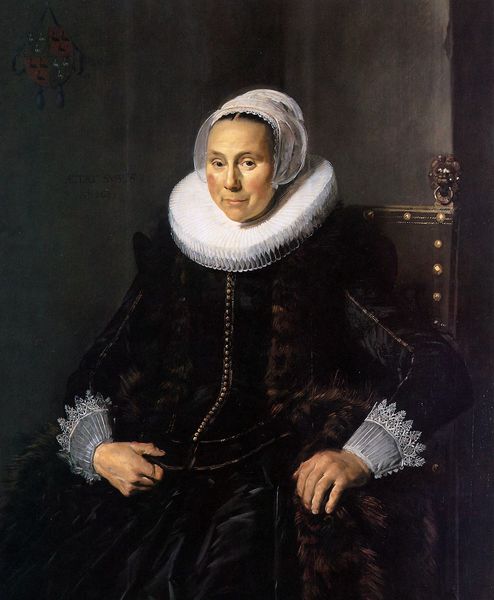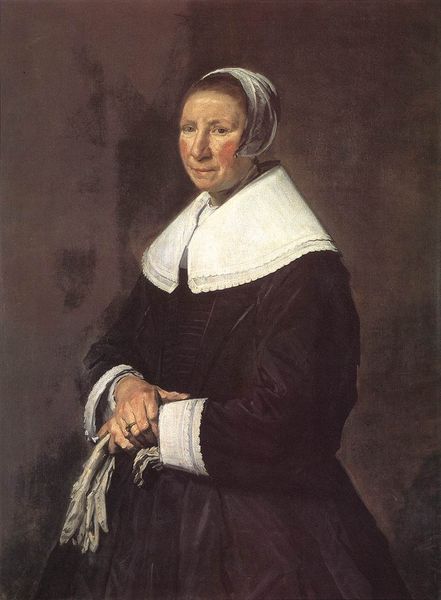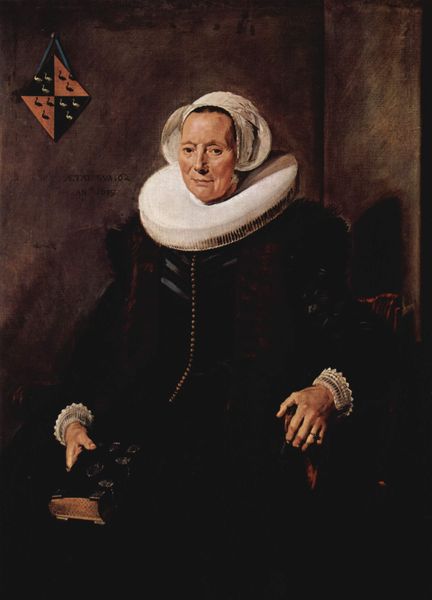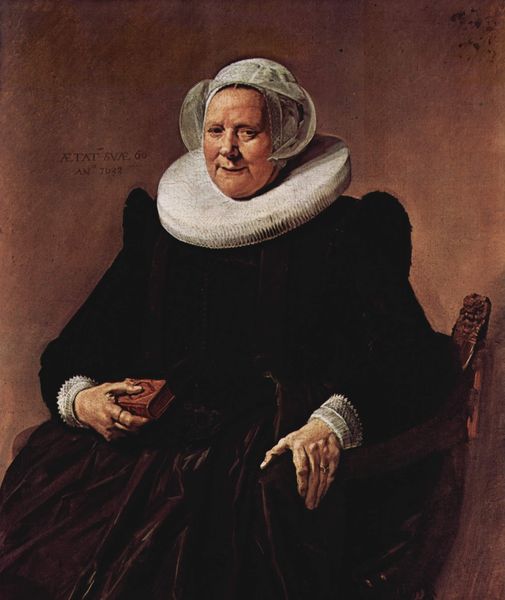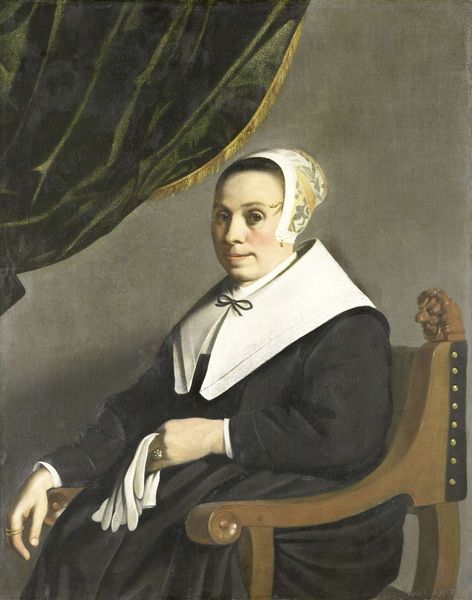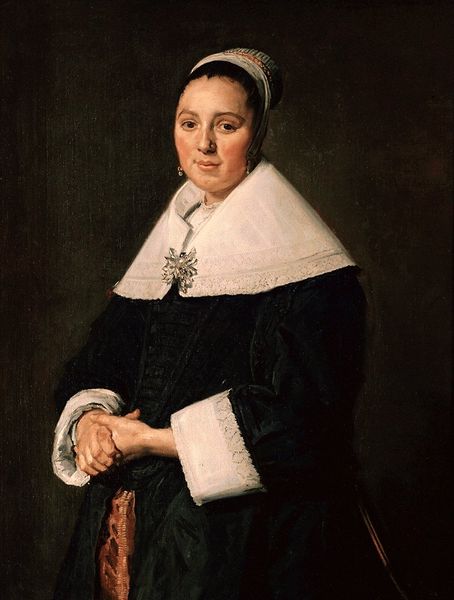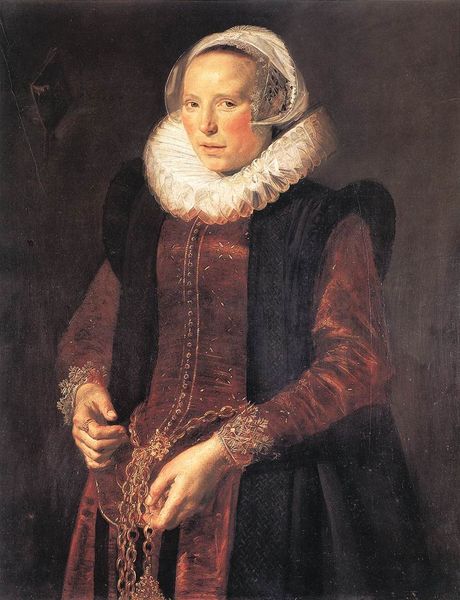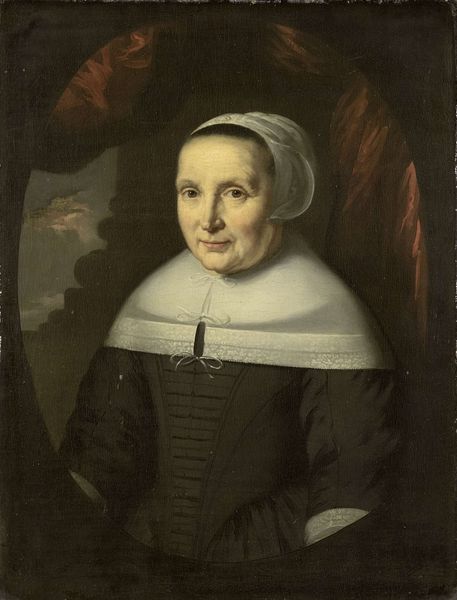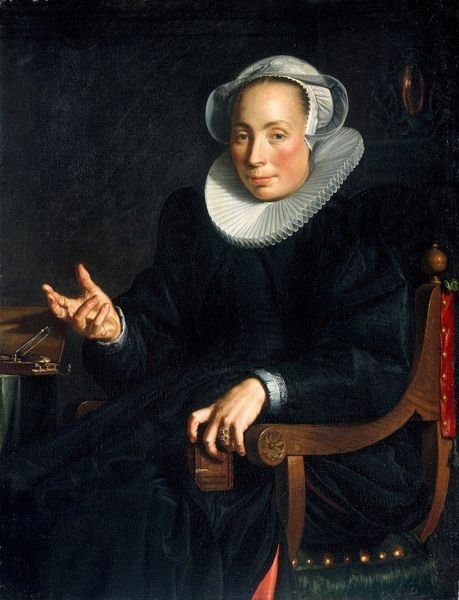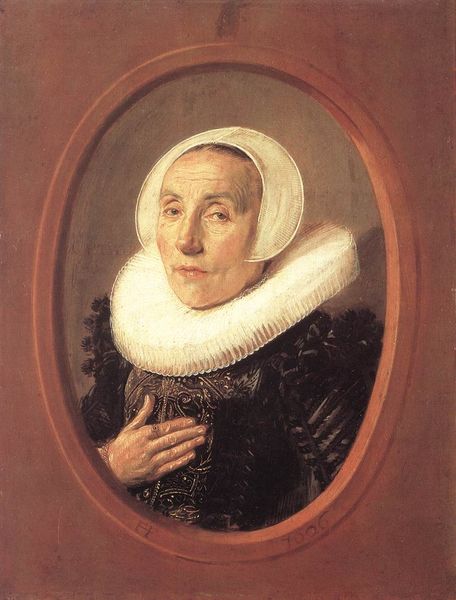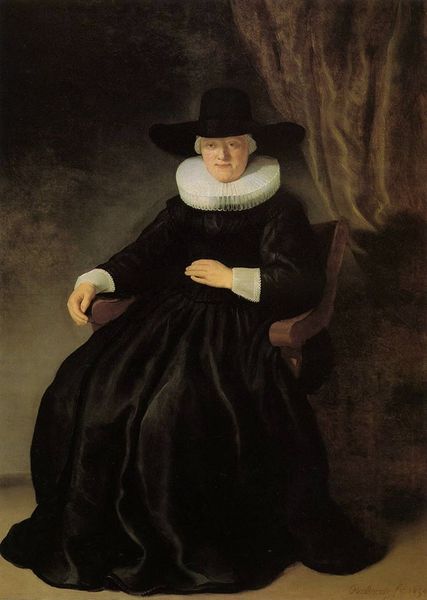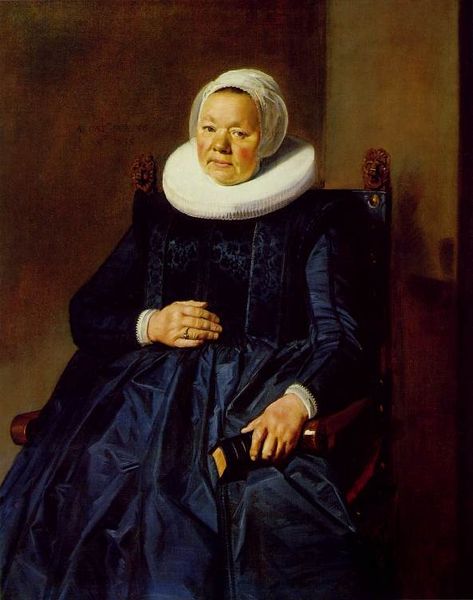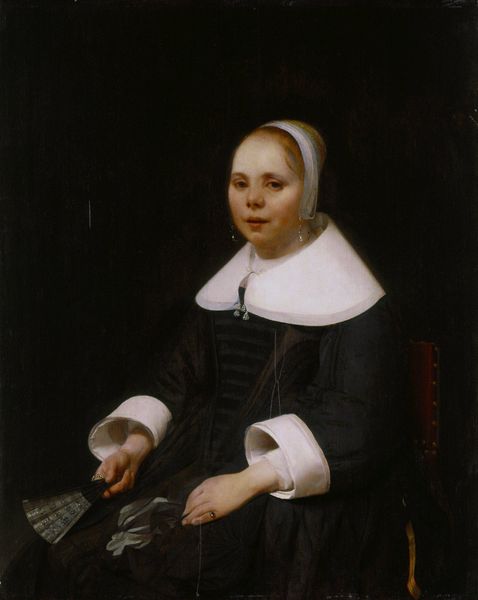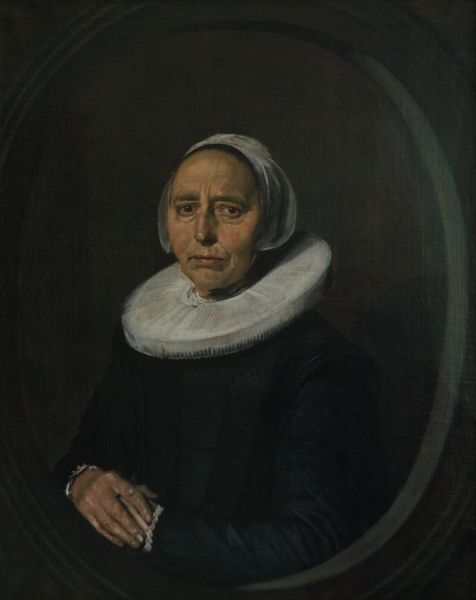
painting, oil-paint
#
portrait
#
baroque
#
dutch-golden-age
#
painting
#
oil-paint
#
realism
Dimensions: 123 x 93 cm
Copyright: Public domain
Curator: This portrait of Feyntje van Steenkiste, painted in 1635 by Frans Hals, captures the sober elegance of the Dutch Golden Age. It's currently held at the Rijksmuseum. Editor: My immediate thought is simplicity. The color palette is muted, almost monochromatic, but the subject is anything but. Her eyes convey such a stillness, an inner world. Curator: Hals' portraits are interesting documents of the rising merchant class in the Netherlands, projecting power and confidence but in this example with some kind of reserve or concern in the face. Notice the contrast in textures – the crisp linen of her collar, against the soft gloves and the darkness of her gown. These would communicate social position to period audiences. Editor: Yes, and I think her dress really sets a symbolic standard – stark black, like the void from which she gazes out at us. It is really the perfect representation of inner life dominating the world on the surface. And her hands clasped with such serene awareness...I can see hints of sadness? Of powerful self-restraint? It has layers. Curator: Precisely, and consider also the chair in the background, with the almost gothic, grimace-like decorative piece that has the look of an animal skull or devil's mask. Its positioning suggests authority and perhaps links to ideas of morality – she’s literally grounded in principles, visually set on a stable base of establishment and virtue. Editor: That is striking! The way he hints at turmoil through details while maintaining such formal composure says much about both Hals' skill, and the era itself. Do you think her family commissioned it to memorialize her specifically? Given the date, the threat of illness was of course constantly near, and it feels funereal in some senses. Curator: Many of the portraits Hals completed from this period commemorate members of the Haarlem elite, often at marriage. Although her life went relatively undocumented beyond her family affiliations and apparent wealth, many of Hals' female portraits hint at these sorts of turning points, whether birth or betrothal. Editor: So much character gleaned from a limited palette. It encourages viewers to really investigate what clues *are* there. Curator: Exactly. Each viewing unfolds new possible meanings about status, morality, and emotional complexities. A compelling reflection on 17th century Dutch society. Editor: Agreed, a perfect confluence of realism and symbol that provides an image of resilience that really echoes in the soul.
Comments
No comments
Be the first to comment and join the conversation on the ultimate creative platform.
